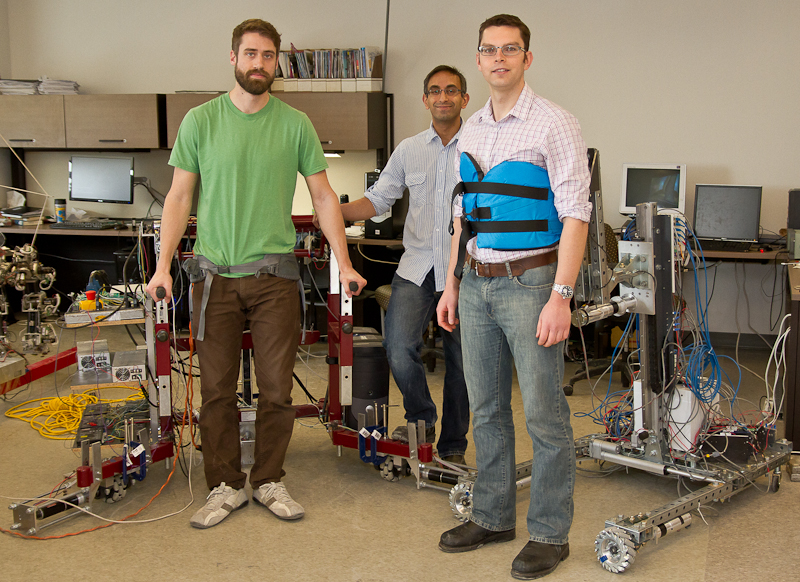A robot designed by Carleton students might help people re-learn how to walk.
A group of engineering PhD students decided to use some of the technology they were working on in a biometrics lab to start a company, according to the company’s president Richard Beranek.
He and two of his colleagues formed GaitTronics, a company that equips physiotherapy clinics with robots to help patients in rehabilitation.
Their first product is a robotic frame with a wide belt attached to it. Patients are strapped in, and the robot follows and supports them as they walk. They developed a sit-and-stand lift with sensors that measure the interactions between the device and the patient, Beranek said. Once the robot detects the patient has lost his or her balance, the device locks itself to keep the patient up.
Beranek’s colleague and business partner Aliasgar Morbi came up with the idea. Morbi said he went to a physiotherapy clinic and watched the therapists work with people recovering from injuries. They used a sort of frame, called a Bungee Walker, to help the patient support their weight as they tried to walk.
“The fundamental issue that we saw was you still needed to be there to support the patient. We wanted to make it simpler for the therapists to do their job,” he said.
The engineers talked to hospital workers and therapists to see what other features they would like to see in a robot-aid. Two attendants are needed to operate the Bungee Walker; the robot only needs one.
When patients recover from surgery, getting them walking again can make a huge difference, Morbi said. A patient who can walk as little as 600 steps the day after surgery typically gets discharged from the hospital earlier. It also has a tendency to boost their morale.
“Really it just comes down to getting the person on their feet,” he said.
They are trying to arrange an initial trial with a physiotherapist at the Ottawa Hospital in the coming months, to see how staff and patients react to the device, he said. The robot can help patients in rehabilitation walk earlier, said Eric Theriault, a physiotherapist at the Ottawa Hospital. He will be conducting the trial in the spring.
“I don’t know if I can speak for the hospital but I can speak to its prospective value in health care. It is innovative, [and] presents possibilities other devices do not,” he said.
He said he likes how the robot doubles up as a lift device and a walking aid, making it practical.
This trial is just the beginning of a long list of things the robot needs done before it can be sold on the market, said Tony Bailetti, director of the Carleton Entrepreneurs, a program that helped students start the business.
He helped the students set up a company and find a market for their product.
“I’m very positive about what they’ve done,” he said. “These guys are proof of what we can do at Carleton.”






